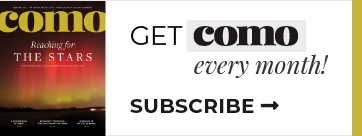Downtown development’s key players: MU, Columbia College
From the architect’s quiver comes the term charrette, meaning a collective effort to draw together ideas about a given project from a diverse group of individuals.
H3 Studio, a consulting firm hired by the city, recently concluded a charrette for the development of two areas of downtown. The urban designers are fine-tuning their report, which will be a valuable supplement to the much-reviewed study by Sasaki Associates commissioned by the city, MU and Stephens College that was finished three years ago.
The charrette identified areas ripe for development along the western and northeastern fringes of downtown such as the Kroenke Group property on Providence and Broadway behind Walgreens.
One fascinating thing about such exercises is how disinterested parties can suggest what they believe is best for private property when the owner might have an entirely different future use in mind.
The planners noted the still-tiny residential base — about 1,200 people live downtown — compared with similar university-anchored communities.
Downtown — The District is the current moniker — continues to receive the attention it deserves as the economic heart of the city, but, in a sense, it has been on life support for quite awhile. During the years, invigoration has come from the expanding presence and continued investment by city and county government, financial institutions, attorneys and consultants. Add to this the expansion of MU from the south and Columbia College from the north and the resurgence of Stephens College, the eastern anchor.
As retail businesses moved to the city’s periphery, restaurants and other entertainment venues have taken up the slack. Add to this specialty shops, the nascent arts district and the Tribune Publishing Company.
Although we can be grateful to the government for helping resuscitate downtown, we shouldn’t forget that various tracts where city structures and parking garages now hover used to be privately owned and provided property tax revenue. Public investment accelerated in 1972 when the city and the county bought the Daniel Boone Hotel and removed it from the tax rolls.

The city deserves a bouquet for building the new City Hall and high-rise parking structures. Then, the inevitable brickbat goes to those responsible for sending us down the wrong path on the West Broadway widening issue. Now there are moves afoot to deliberately constipate traffic flow into The District that the government and others have so generously coddled during the years.
Apart from government, the two obvious players to watch will be MU and Columbia College, a financially flush institution advancing from the north. One area to watch in particular lies between Hitt Street and College Avenue north of University Avenue. Here is bulldozer bait among a cluster of unmemorable wooden structures that could be supplanted by university-related housing, perhaps high-rise in nature.
As my take on the charrette continues, I’m reminded of Baron Haussmann, the mid-19th-century Paris prefect who had the Draconian authority to modernize the City of Light. Moving ahead to the 22nd century, Columbia would need to widen all the downtown alleys so delivery vehicles that currently clog city streets could use them to unload their goodies with ease.
More than half a century ago, Ninth Street was called the Strollway. Maybe 100 years hence, Broadway could become a strollway with traffic banished between, say, Fourth Street and Short Street. By the time anyone who could remember it would be gone, the infamous downtown loop of the 1970s would be revived and folks would figure out how to make it work.
Ultimately, all parking will go underground. Maybe Broadway itself is excavated and traffic routed beneath the surface with connections to various underground parking facilities. By the year 2100, maybe Columbia will have light rail and by 2200 a subway. Anyone for some real visioning?


